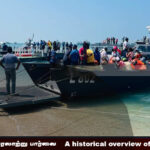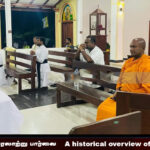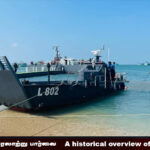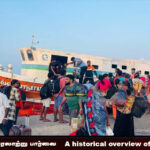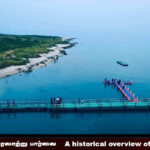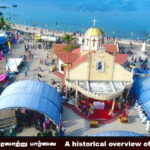

A historical overview of Katchatheevu
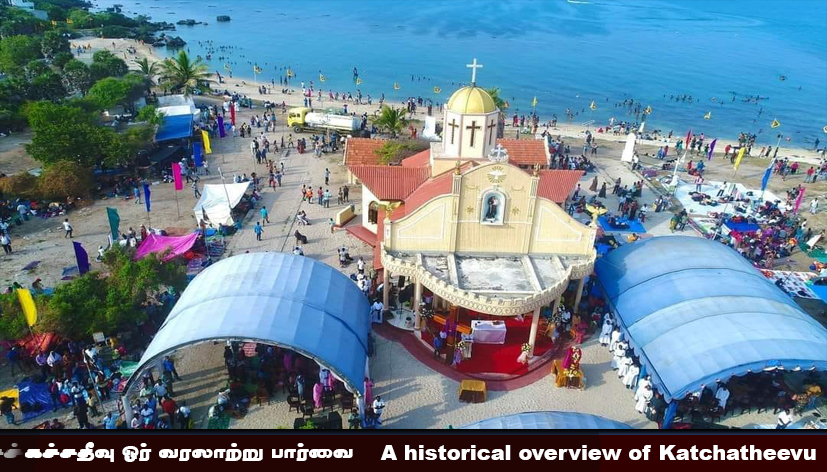
Katchatheevu is a landmass in the Indian Ocean that causes frequent wave. Based on geological and archeological studies, it is said that this landscape was raised from water between about one lakh fifteen thousand and one lakh thirty thousand years ago.
The area of this island is 163 acres and is full of sea creatures, oysters and small shells belonging to the ‘Neithal land(the sea and the area around the sea). Katchatheevu is located at a distance of 20 kms from Neduntheevu and 10 kms from Ramanathapuram, India.
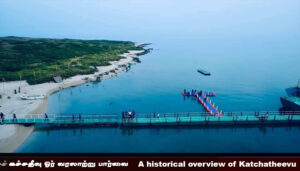
At present, Katchatheevu is in the hands of Sri Lanka and the administration is carried out by the North divisional Secretariat of Neduntheevu. During the Portuguese period, the administration was carried out by them
Katchatheevu was a land leased under the management of Ramanathapuram Zameen and it is confirmed by the Ramanathapuram District Statistical Manuals . The story of how Katchatheevu became a part of Sri Lanka is an interesting one.
In 1921, problems arose over the licensing of Katchatheevu, and negotiations took place between the two governments but the two countries could not come to an agreement. Later, during the Second World War, Katchatheevu was used as an artillery base by the Sri Lankan government. In 1949, India announced that it would use the island as a naval training base and Sri Lanka strongly opposed it.
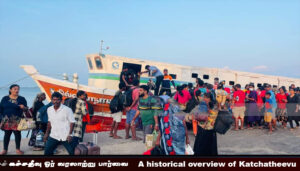
Katchatheevu is a good example of how political changes periodically reshape the land and its administrative boundaries. A war broke out between India and Pakistan in 1972 when Indira Gandhi was the Prime Minister of India. At that time, Sri Lanka, which was India’s neighbour, extended its friendship to Pakistan.
The Sri Lankan government allowed Pakistani warplanes to land and refuel in Sri Lanka. In this situation India stood on one side and Sri Lanka, Pakistan and China on the other. India feared that Sri Lanka’s actions would affect India’s regional politics. So it wanted to maintain relations with Sri Lanka by giving Katchatheevu under its administration to Sri Lanka. In the background of this, an agreement was signed on June 06, 1974 between the former Indian Prime Minister Indira Gandhi and the Sri Lankan Prime Minister Sirimavo Bandaranaike . Katchadeeevu was taken over by Sri Lanka.
However, fishermen from Tamil Nadu in India were allowed to catch fish in the vicinity of Katchatheevu as usual and to rest their nets on the island. Later, the war situation in Sri Lanka changed this situation.
In 1983, during the reigme of Jayawardene , a buffer zone was declared under the Maritime Zone Protection Act. Subsequently, in 1985 and 1993, the Sri Lankan government enacted the No Sea Zone Acts. As a result, the fishermen of both the countries suffered losses in their business.
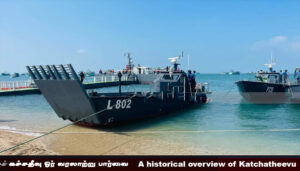 Indian fishermen crossing the border were chased away by the Sri Lankan Navy and deaths also occurred. These sparked debates in the Legislative Assembly of Tamil Nadu. People began to protest , but as per the foreign policy of the Indian central government, no changes were made to the license of Katchatheevu.
Indian fishermen crossing the border were chased away by the Sri Lankan Navy and deaths also occurred. These sparked debates in the Legislative Assembly of Tamil Nadu. People began to protest , but as per the foreign policy of the Indian central government, no changes were made to the license of Katchatheevu.
Even though the island is in Sri Lanka’s hands, fishermen from both countries who crossed the borders continue to face the plight of being imprisoned. In the case of Sri Lanka, the boundaries between India on its northern and northwestern coasts are of a different nature. There were no problems when the human borders was 3 miles and 6 miles. Later, when the boundaries were changed to 12 miles, the boundary lines overlapped each other in the Palk Strait which was less than 24 miles. Thus the coastal boundaries of Sri Lanka and India were demarcated on the basis of broad longitudes. Inorder to draw the coastal boundaries, agreements were signed along the Palk Strait in 1974 and in 1976 along the Mannar Bay of Bengal.
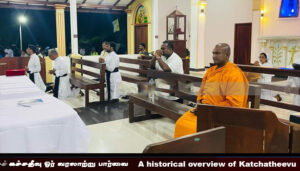
Why is it so important?
***
This uninhabited island is geographically and economically prime. The coral reefs found in the sea around Katchatheevu stimulate the reproduction of fish. Thus, this island is rich in fisheries.
Apart from this, there is another thing that culturally binds the Indian people of Sri Lanka is the Anthony’s church . This Church was established in 1913. Even though there is a competition for dominance over Katchatheevu, permission has been given for the people of both countries to participate in the annual Anthony church festival.
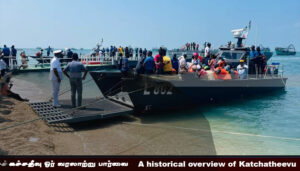 The 2023 Katchadeevu St. Anthony’s Church Festival is being held on March 03 and 04 in coordination with the Jaffna District Secretary with the cooperation of all relevant departments including the Jaffna Synagogue, Sri Lanka Navy and Neduntheevu Divisional Secretariat.
The 2023 Katchadeevu St. Anthony’s Church Festival is being held on March 03 and 04 in coordination with the Jaffna District Secretary with the cooperation of all relevant departments including the Jaffna Synagogue, Sri Lanka Navy and Neduntheevu Divisional Secretariat.
The sound of prayers is heard aloud in a land where the sounds of war have been silenced is a metaphor for both lands.
@2023
Sarmila Vinothini.
Sharmila Vinothini Thirunavukarasu
